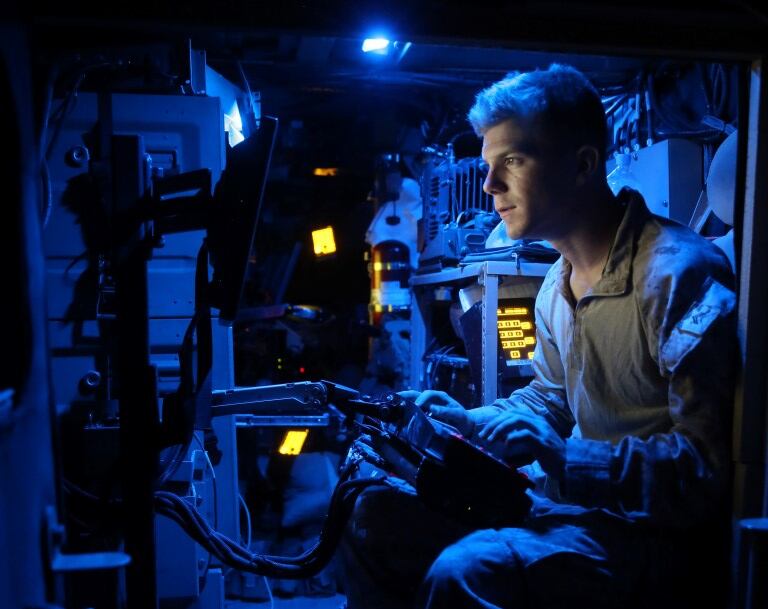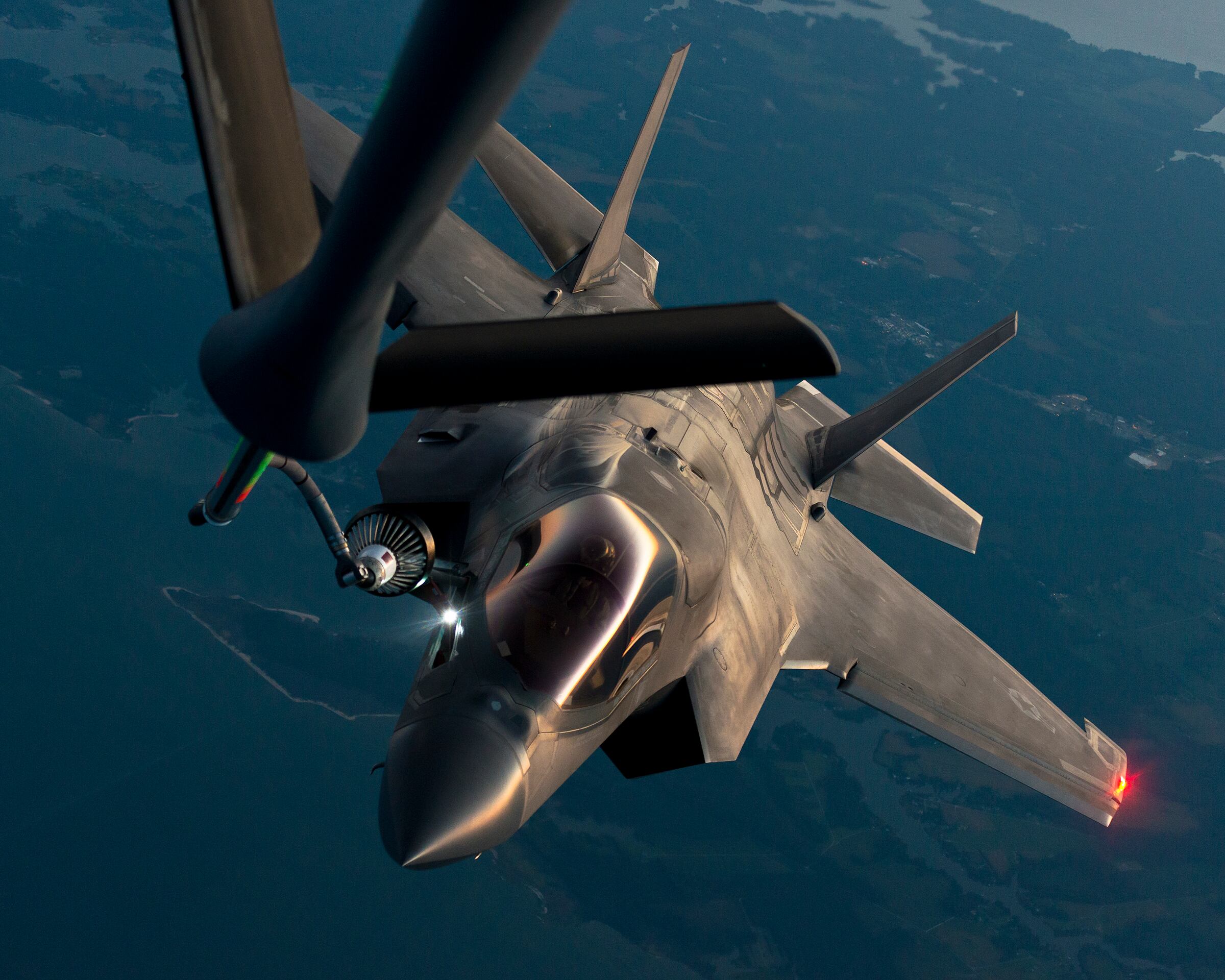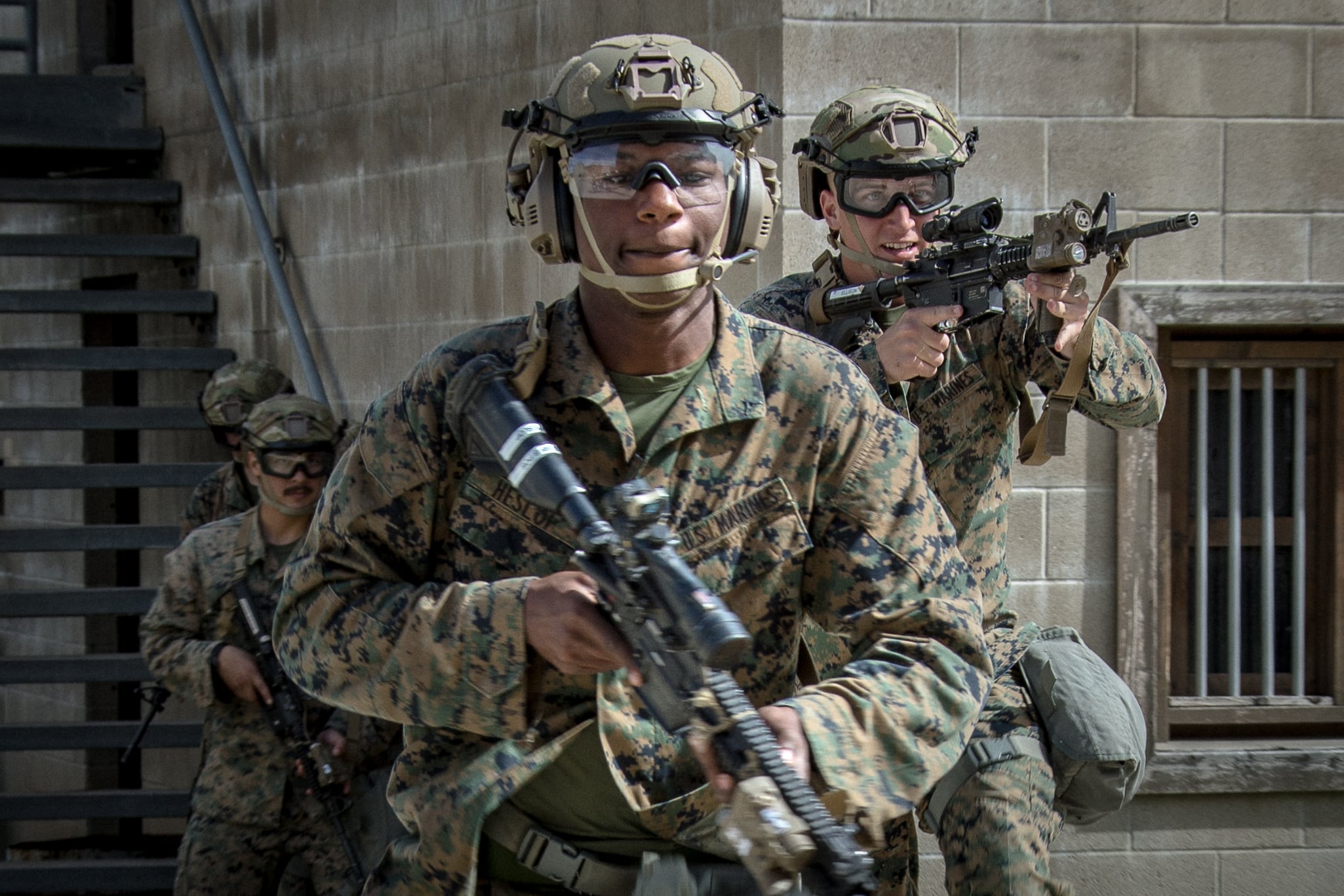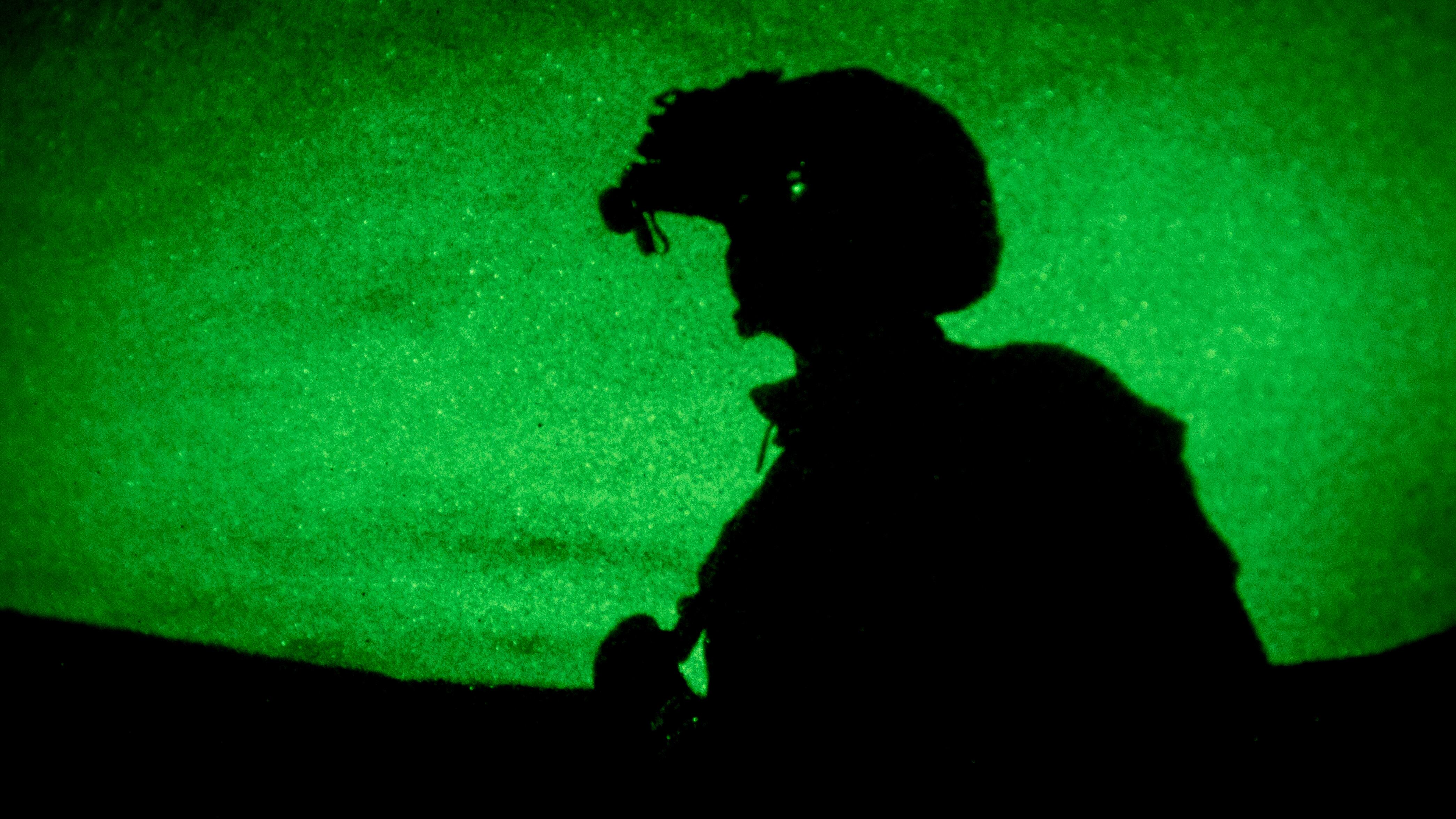In a rapid push to check the rising military capabilities of Russia and China, the Marine Corps has stretched its budget on a slew of costly high-tech aircraft like the F-35B and new amphibious combat vehicles.
While much of the new gear and experimental fighting concepts are rapidly coming to fruition for what the top Marine has dubbed the “Force 2025” initiative, the Corps is struggling to place Marines in high-end positions to man the force.
According to data obtained by Marine Corps Times, serious manpower gaps appear to be impacting fields like cyber, intelligence, drone operators, ground combat leadership and F-35B pilots — occupations Commandant of the Marine Corps Gen. Robert B. Neller often has highlighted as key to building the future fighting force.
High-tech stealth F-35B pilots are only manned at 33 percent, according to 2019 data. Some cyber fields are as low as 17 percent. Drone officers are manned at only 53 percent. Counterintelligence operators are at 67 percent, and some signals intelligence fields are manned at 69 percent.
RELATED

The Corps is also in a race to plus up its low altitude air defense, or LAAD, Marines as it faces increasing air threats. In 2005, the Marine Corps eliminated 4th LAAD Battalion, and in 2007 it eliminated 1st Stinger Battery. Now the Corps is seeking an increase of 214 LAAD counter-drone Marines through fiscal year 2021 and 2022, according to documents obtained via a Freedom of Information Act request.
Other fields appear grossly overmanned: Ground intelligence officers and signals intelligence officers are manned at more than 140 percent. And enlisted drone operators are hitting 138 percent manning.
The data obtained by Marine Corps Times via a Freedom of Information Act request is current as of February.
The manpower crunch and overpaced demand for high-end fields may create new opportunities for Marines in the form of retention bonuses and a slew of new occupations for Marines to progress into, as the Corps ratchets up efforts to meet the demands of a world amid great power competition.
But the Corps’ push to build the future force may also result in shrinking it to reinvest in what incoming Commandant Gen. David Berger wrote in prepared remarks to senators during his April 30 confirmation hearing as “constrained resources.” It’s an issue Berger noted as one of his “most significant challenges” as he modernizes the Marine Corps.
The Corps says these manning numbers only provided a limited snapshot of a more complex manning calculus, which involves juggling school seat requirements, building new occupations and getting Marines through career progression courses.
For schools that don’t belong to the Marine Corps, like the 7315 unmanned aircraft system or UAS officer field, seat requirements have to be registered at times two years in advance, according to Brian Gahagan, deputy branch head for Manpower Management Integration Branch.
Gahagan says the surface numbers are “not an accurate depiction” and that some numbers will look “skewed.” It is a multiyear build, he said.
“As new modernizing or divesting [occupational fields] mature through the process many will reflect numerically low staffing levels that, to someone outside the manpower profession, paint an unrealistic perspective of some primary MOSs,” Manpower and Reserve Affairs told Marine Corps Times in an emailed statement.
“It may take several years to meet the accession and training levels to fully meet the requirements and build of Marine Corps Force 2025,” Manpower and Reserve Affairs said.
Still, the challenges for the Corps to meet the demands of a dynamic world and rapidly rising adversaries may come with considerable sacrifices.
“We will need to conduct a deliberate redesign of the force to meet the needs of the future operating environment,” Berger said in remarks to senators.

Neller’s decision to cut the rifle squads to 12 Marines may be a glimpse of manpower changes the Corps will have to make to plus-up billets in high demand fields and to cut costs to the force.
In many cases, fields that look poorly manned actually have an adequate number of people in the occupation, but those Marines simply need to attend various career progression schools within their tracks to officially obtain some leadership billets.
Still, those Marines have yet to attend specific follow-on training for leadership positions the Corps has deemed as necessary for obtaining the occupational field, despite already sitting in the billet.
Some of those fields are simply feeder MOSs, where Marines need to attend various schoolhouses to obtain the occupation.
As is the case with the 0202 field or Marine air-ground task force intelligence officers, which is only manned at 57 percent, according to data obtained by Marine Corps Times.
Capt. Will Dunst, an unrestricted officer promotion planner with Manpower and Reserve Affairs, says the “assignable inventory is healthy.”
The 0202 is a feeder occupation within the 02XX field that includes other intel occupations. Dunst says the 02XX occupational field is actually manned at 87 percent, but some Marines need to attend an underutilized school known as the MAGTF [Marine air-ground task force] Intelligence Officer Course, or MIOC.
It is an issue that the Corps is addressing and has slated for action, Dunst said.
High barrier for entry
A lot of the Corps’ manning issues are solved by simply pushing Marines through their feeder MOSs and getting them to schoolhouses.
But for some fields, high barriers to entry are preventing Marines from obtaining the occupation; and in other cases, demand for the field is simply creating pipeline logjams, real manpower concerns that can’t simply be addressed by stamping billet assignments for Marines who have not actually obtained the primary field.
The 0211-counterintelligence field has historically had manning problems associated with a multitude of barriers that hinder Marines entering the field.
The field is a lateral move primary occupation that requires a top secret sensitive compartmented information clearance and a high ASVAB test general technical score of 110, which Maj. Lucas Crider, end strength planner and enlisted plans for Manpower and Reserve Affairs, described as a “historically very high” barrier.
To complicate the matter, Marines wishing to enter the field were often put through overly subjective evaluations, like essay writing and interviews.
Crider says the Corps has since removed some of the more subjective requirements and standardized the screening process.
Data obtained by Marine Corps Times says the field is manned at 67 percent, but Crider says the overall inventory of counterintelligence Marines is at 82 percent and that the field has been trending upward for the past couple of years.

Within the aviation community, new job fields like the 7315 unmanned aerial system officer field and the 7518 F-35B occupation are outpacing the demand and available school seats.
For the drone field, the Air Force runs the schoolhouse, and the Corps only has a finite number of seats.
According to Dunst, the Corps is working with the Air Force to increase seats. But increasing seats also comes with opportunity costs in manpower from the fleet, as often pilots have to staff cadre schoolhouse positions.
For the officer drone field, the Corps is also looking at leveraging redesignations for pilots, who for whatever reason may not have completed pilot training. This could allow the Corps to recapitalize on skills the Marine may already have learned.
Dunst called it a “good use of taxpayer money.”
From the enlisted side of the house, the 7314 UAS field is overmanned at 138 percent. But Dunst says that growing requirements will eventually balance it.
The F-35 pilot training is running into similar problems where the demand is simply “outpacing training capacity,” Dunst said.
The Corps is pushing a number of initiatives like pilot bonuses and a program called “2P captain continuation” to help shore up the F-35B field.
The captain continuation program, for those Marines selected and recommended by a board, allows captains passed over twice for promotion to be offered a chance to continue.
The newly minted 1700 cyber field, according to data obtained by Marine Corps Times, is critically short.
The 1705 cyberspace warfare development officer is manned at only 17 percent, the 1721 cyberspace defensive operator is staffed at 63 percent, and the 1799 cyber operations chief field is manned at 55 percent, data show.
While the numbers look bad, the cyber field is barely a half year old and many of the fields are only in their first year of MOS production.
The requirements to get these Marines through the pipeline training have been registered, Dunst said.
For the cyber defensive operator field, the Corps just kicked off the first accession school in the second quarter of fiscal year 2019 and simply hasn’t graduated the Marines from that course, according to Dunst.
In some cases, manpower numbers are crunched because the Corps has created new schools.
In 2019, the Corps created the new 0521 psychological operations field, or psyops, which according to data is only manned at 63 percent. Officials at Manpower and Reserve Affairs say the inventory of psyops Marines is actually at 67 percent.
The field used to be an additional MOS and only recently became a primary field, but after completing a tour in psyop, those Marines would leave the field. That has caused the numbers to appear low.
While bleeding talent, Crider says the field has a “difficult school to get through.”

To make the field healthy, the Corps is trying to entice psyops Marines who left the field to come back. And now, once Marines laterally move to the field they can stay in the community, Crider said.
Crider said that the field is on track and should hit its authorized billet number of 49 Marines by the end of this fiscal year. There are currently 33 psyop Marines.
The Corps also has created new signals intelligence fields such as 2611 cryptologic cyberspace analyst, manned at 3 percent, and 2629 signals intelligence electronic warfare tech field, manned at 76 percent.
For the 2611 field, the schoolhouse is new and has yet to graduate anyone. And the 2629 field is a feeder occupation within the 26XX signals intel field, where Marines just need to attend follow on leadership and career progression schools.
While a lot of manning issues for the Force 2025 initiative can be solved by pushing Marines through the career progression schoolhouses, there are some serious concerns for fields like cyber, drone operators and F-35 pilots.
The Corps says it is addressing the issues, registering schoolhouse requirements and working with sister services to increase class seats, while also offering bonuses and job redesignations to help plus up the fields.
At the end of the day, the future force has several years to hit its goals.
New gear, tech, weapons, vehicles and aircraft are already hitting the fleet. And the Corps has signed off on its new expeditionary advanced base operations concept to confront a rising China in the Pacific.
The manpower to staff the new fields to put all the new toys and fighting concepts is slowly catching up.
“The NDS [national defense strategy] forces us to establish strategic priorities and make difficult choices — which will mean doing less in certain areas so we can do more in others,” Berger wrote to senators.
Shawn Snow is the senior reporter for Marine Corps Times and a Marine Corps veteran.





